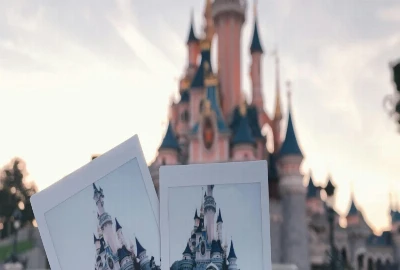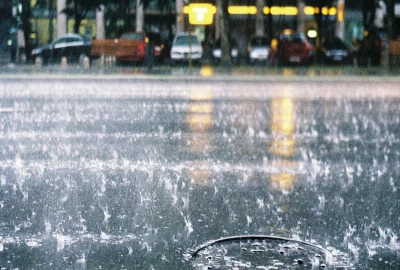Set-Jetting to Nowhere: What It’s Like Visiting Fictional Places

We’ve all dreamed of stepping into our favorite films or TV shows, whether it’s wandering through Hogwarts, walking the streets of Gotham, or climbing the iron steps of King’s Landing. But what happens when those places… don’t actually exist?
Welcome to the surreal travel phenomenon of set-jetting to nowhere—a rising trend where fans embark on real-world pilgrimages to fictional places. These are not just film sets or studios, but actual destinations that feel like the fantasy, even if they aren’t one-to-one recreations. You’re not just following a map—you’re chasing a feeling.
This blog unpacks what it really means to pursue these ghost geographies, the psychology behind why we do it, where people are going, and how the experience often blurs the lines between reality and imagination. Whether you're a fan of epic fantasy, science fiction, or cozy romantic comedies, there’s a fictional world out there waiting to be stepped into—just don’t expect a signpost.
The Rise of Set-Jetting: Escapism Turned Into Itinerary
“Set-jetting” refers to traveling to locations featured in movies or TV series. Think New Zealand’s dramatic fjords for The Lord of the Rings, or Dubrovnik standing in for Game of Thrones’ King's Landing. But set-jetting to nowhere is different—this form of travel targets locations that resemble fictional worlds, even if they were never actually used in production.
So why are more people booking trips to places that don't technically exist?
First, there's the emotional hook. Fictional settings evoke powerful feelings: nostalgia, wonder, mystery, or belonging. Whether it’s the moody forests that resemble Twin Peaks or the misty cliffs reminiscent of Wuthering Heights, people are drawn to these landscapes because they match the emotional tone of a story they love. It’s less about trivia, more about immersion.
Second, there's the aesthetic draw. Fictional places often have a heightened sense of design—quirky, haunting, magical. Travelers seek destinations that align with these moods. For instance:
Fans of Studio Ghibli may find themselves in rural Japan or the wooden streets of Jiufen, Taiwan.
Star Wars lovers head to Tunisia, Iceland, or the deserts of Jordan to feel like they're on Tatooine or Ahch-To.
Middle-earth enthusiasts still flock to New Zealand, even if no elves are in sight.
Finally, there’s a deeper search for meaning. Set-jetting to nowhere isn’t just sightseeing—it’s soul-searching. You’re not chasing a tourist site. You’re trying to step into a story that once moved you, hoping it will change you again.

Where Fiction Meets Geography: Popular Nowhere Destinations
Some fictional worlds were built from scratch in studios. Others were composites—pieced together from different corners of the globe. And some never existed anywhere but in the imagination of their creators. Still, fans pursue them, hoping to anchor fantasy in physical form.
Here are some of the most popular “nowhere” destinations—and what makes them so compelling:
Scotland for Outlander Fans
While Outlander was filmed extensively in Scotland, many visitors go beyond filming locations, chasing the wild, moody romance of the highlands that echoes the series' tone. The Culloden Battlefield, Glenfinnan Viaduct, or even remote bothies offer that melancholic, time-travel vibe.
Iceland as Westeros (and Beyond)
Even before Game of Thrones, Iceland felt otherworldly. Its black beaches, lava fields, and ice caves align with countless fantasy landscapes—from sci-fi dystopias to medieval epics. Travelers looking for a taste of unreality often land here with nothing but a feeling to guide them.
Forks, Washington – Twilight Country
Forks wasn’t heavily featured in Twilight’s filming, but fans still arrive en masse, drawn by the brooding Pacific Northwest setting that reflects the series’ emotional atmosphere. The cloudy skies, moss-covered trees, and isolation feel like fiction—even if the town is real.
Hobbiton, New Zealand
OK, this one was a real set. But many Tolkien fans travel far beyond Hobbiton into the untouched mountains, lakes, and forests of New Zealand’s South Island. The goal isn’t to see Bilbo’s house; it’s to feel like you’re in a story where epic quests are possible.
Mont Saint-Michel, France – Disney Dreaming
This tidal island inspired the design of the castle in Disney’s Tangled and countless other fantasy backdrops. It was never directly filmed, but walking through its cobbled alleys feels like you’ve stepped into a fairy tale.
These examples highlight something important: set-jetting to nowhere is more about atmosphere than accuracy. It's less “film location scouting” and more “emotional geography.”

The Emotional Payoff (And Letdowns) of Set-Jetting to Nowhere
Chasing fictional places can be deeply rewarding—but it’s not without its challenges. Many travelers experience a kind of cognitive dissonance when the real world doesn’t quite live up to the imagined one.
For example, you might trek hours to a misty mountain you’ve seen in fantasy films only to find crowds, selfie sticks, and parking lots. Or maybe the location doesn’t have the magic lighting or orchestral soundtrack you expected. This clash between fiction and reality can be jarring.
But that doesn’t mean it’s not worthwhile.
The emotional payoff comes not from perfect accuracy, but from how much you bring with you. Fictional places resonate because of what they mean to you. When you walk through a foggy forest that reminds you of your favorite story, you’re adding your own emotion to the space. You're co-creating meaning.
In a way, these places become sacred. They become part of your personal mythology. They remind you that wonder still exists—even if dragons don’t.
Tips for maximizing your experience:
Don’t expect perfection. Go for feeling, not filming.
Travel during off-season to avoid crowds.
Read or re-watch the story before your trip to reconnect emotionally.
Journal your impressions—what feels the same, what’s different, and how it affects you.

Is It Worth It? Why Set-Jetting to Nowhere Still Matters
Skeptics may ask: why spend time and money chasing made-up places? Why go to “nowhere” when there’s so much real history, culture, and nature to explore?
Here’s why: stories shape how we see the world. Fiction isn’t fake—it’s emotionally real. When a book or film touches us deeply, it changes our internal landscape. Visiting places that reflect that internal change isn’t escapism—it’s a form of emotional pilgrimage.
Set-jetting to nowhere reminds us that travel isn’t just about checking boxes or racking up passport stamps. It’s about going somewhere that resonates with who we are—or who we want to be.
In many ways, these fictional places act like mirrors. When you walk through a forest that feels like Narnia, you might not find fauns or wardrobes—but you might rediscover a part of yourself that believed in magic. That’s worth the journey.





